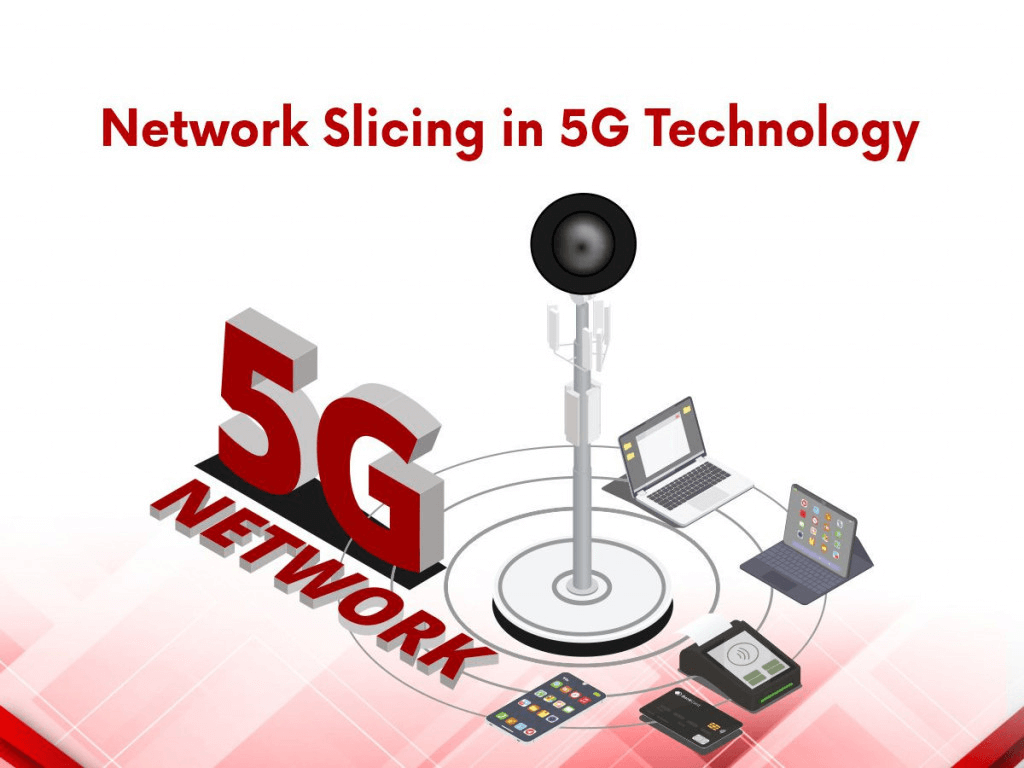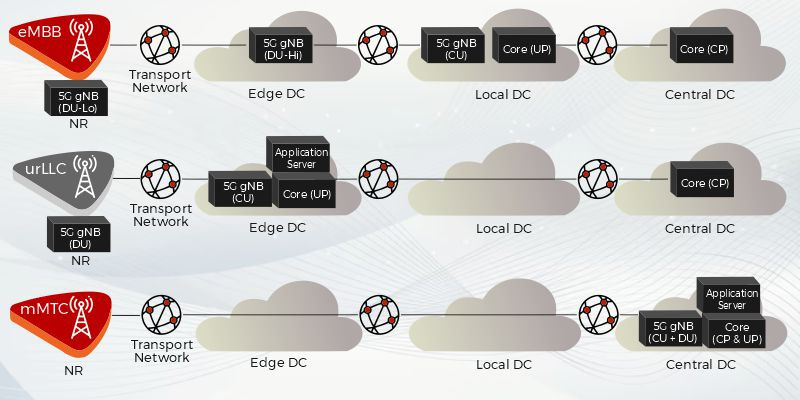
Close


Network slicing overlays several virtual networks across a shared network domain, or a collection of shared network and computing resources. The term “network slicing” is most frequently used in discussions of 5G networks because the 5G specification calls for it as a core capability, whereas 4G and prior generations of cellular communication services did not and could not support it.
Within the restrictions imposed by the underlying physical networks, each slice of a network can have its own logical topology, security protocols, and performance characteristics. Different slices can be allocated to various tasks for ensuring that a particular application or service receives priority access to capacity and delivery as well as for isolating traffic for particular users or device classes. Network operators can maximise network resource utilisation and service flexibility by slicing networks.
Network slicing is the process of dividing a network into a number of virtual connections that can be customized to the traffic demands of various use cases.
It is a type of virtual network architecture that is based on the same ideas as fixed network such as Software Defined Networking (SDN) and Network Functions Virtualization (NFV). SDN and NFV are currently being used commercially to provide network flexibility by enabling the division of traditional network architectures into virtual elements that can be linked (also through software).
Multiple virtual networks can be built on top of a single shared physical infrastructure using network slicing.
The virtual networks are then modified to suit the unique requirements of the applications, services, devices, clients, and operators.
For 5G, a single physical network will be sliced into a number of virtual networks that can support various radio access networks (RANs) or various service types running across a single RAN. Network slicing may also be implemented in the RAN, however it is intended to be used primarily to divide the core network.
Network slicing is a key aspect of 5G. Slice implementation uses the same virtualization principles across the entire provider network architecture. These principles include the radio access networks, supporting backhaul and carrier core networks, and related data centre resources that underlie 5G. Service providers can design a variety of network slice designs using slicing, which gives consumers real guarantees about things like the minimum throughput for their connections or the priority delivery of packets from certain devices or applications.
A 5G network operator has the ability to physically divide traffic between various radio networks, slice a single network, or combine the capacity of several networks and slice the combined resources. This gives 5G network operators the ability to select the properties required to meet their target levels of spectrum efficiency, traffic capacity, and connection density, or the number of devices that can join from a given space.
The following are high-level categories of network slice architecture for 5G service types that use slicing for differential handling of traffic:
Extreme (or enhanced) Mobile Broadband (eMBB) – The most traffic on the mobile network will be produced by these applications because they are largely focused on video and need a lot of bandwidth.
Massive Machine-Type Communications (mMTC) – With billions of devices connected to the network, this is now more widely referred to as the Internet of Things, but on a much larger scale. Compared to eMBB applications, these devices will produce a lot less traffic.
Ultra-reliable Low-Latency Communications (urLLC) – These will enable tasks like remote surgery or vehicle-to-X (v2x) communications and require Mobile Network Operators (MNOs) to have mobile edge computing capacity set up.

The architecture of network slicing in 5G technology is comparable to a complex public transportation system. Some elements of transportation (such as roads and bridges) are universal. However, various modes and vehicles are designed to meet the user’s needs for volume, speed, and cost. The architecture’s key principles are end-to-end (E2E) network slicing and logical isolation from other slices, even while each individual slice traverses numerous widely used network elements.

A network slicing SDN (Software Defined Network) is a crucial component of the architecture used to manage traffic flows through Application Programme Interfaces (APIs) of a central control plane. Through the application layer, the control plane configures resources to deliver the client-specific services. Additionally, SDN has an infrastructure layer that handles data forwarding and rule processing from the control plane and includes fundamental network functions. The network slice controller (orchestrator) manages services and keeps track of interlayer functionality.
Each client instance can unlock and orchestrate the specific resources that produce a slice with the required service(s) included through SDN virtualization. It takes constant performance monitoring and isolation between slices to meet these demands, which is a dynamic function. Recursion is yet another essential component of SDN for network slicing that enables the control plane to construct numerous sub controllers to support slice composition.
Another prerequisite for slicing is NFV (Network Function Virtualization). The concept behind NFV is to provide services that were previously only available on proprietary hardware by installing network functionality on Virtual Machines (VMs) on a virtualized server.
The lifecycle of network slices and their infrastructure resources can also be managed using NFV. SDN is used to control the provisioning of VMs that are either in core clouds or edge clouds. Together, these technologies can offer a solid basis for effective network slicing for SDN and NFV, utilising both virtual and physical resources, including RANs.
Depending on the needs of the user and different use cases, a single network can be used to offer a variety of services.
In accordance with each network slice, network operators can allocate the proper amount of resources. As a result, it aids in the efficient and effective utilization of resources. For instance, one network slice may be built to give high throughput, while the other may be designed to deliver low latency and low data rates.
It enables network operators to cut expenses (OPEX) and capital expenditure (CAPEX).
It significantly increases operating efficiency and time to market for the delivery of 5G network services.
Although 5G is the next advancement in mobile networks, network slicing prevents it from being just another radio access network model. Network slicing works by applying virtualization principles to mobile networks. The significance and urgency of network slicing are still being debated, despite the fact that this may turn out to be the next major change in the 4.0 industrial revolution.
The simplest definition of network slicing is horizontal virtualization, which focuses on combining the following:
The 5G New Radio (NR) network
Software-Defined Networking (SDN) technology
Network Functions Virtualisation (NFV) architecture
These enable Communications Service Providers (CSPs) to separate users, machines, and purposes that require a specific Quality of Service (QoS) by dividing the network into several self-sufficient network slices. Applications for these slices can include providing mobile network administrators with their own virtual infrastructure, which could significantly improve Mobile Virtual Network Operator (MVNO)-Based Services.
Cross-application and cross-service network division is made possible by horizontal slicing. Each horizontal slice’s associated virtual resources are separate from those used for different slices.
This distinguishes horizontal network slicing from today ’s network division, also known as vertical slicing. In these cases, resources are not segmented as much and are allocated based on the use case.
The major players in the global network slicing market include Ericsson, Samsung, Nokia Corporation, Huawei Technologies, ZTE Corporation, Cisco Systems Inc., HPE, Mavenir Systems Inc., Amdocs, Inc., Intel Corporation.
Network slicing, one of the most important technologies deployed in the 5G network domain, will transform the telecommunications sector. The network of the 5G era must support a large diversity of rapidly increasing devices and end users. Network slicing is hence the preferred choice.
Recent developments in the telecom sector suggest that network slicing will eventually play a key role in 5G networks.
In order for network slicing techniques to perform effectively, the underlying network architecture must be virtualized and the necessary software should be installed. 5G network technology incorporated SDN (Software-Defined Network) concepts to increase the architecture’s flexibility and dynamic nature. This enables the development of a wider variety of applications in the modern world. The approach to transform outdated cities into modern smart ecosystem cities is made possible by network slicing, which has a significant positive impact on people’s quality of life in general.
Authored by – Guniyal Bagga
Please Subscribe our news letter and get update.
© Copyright 2023 – Wissen Research All Rights Reserved.
Powered by VintageCoders